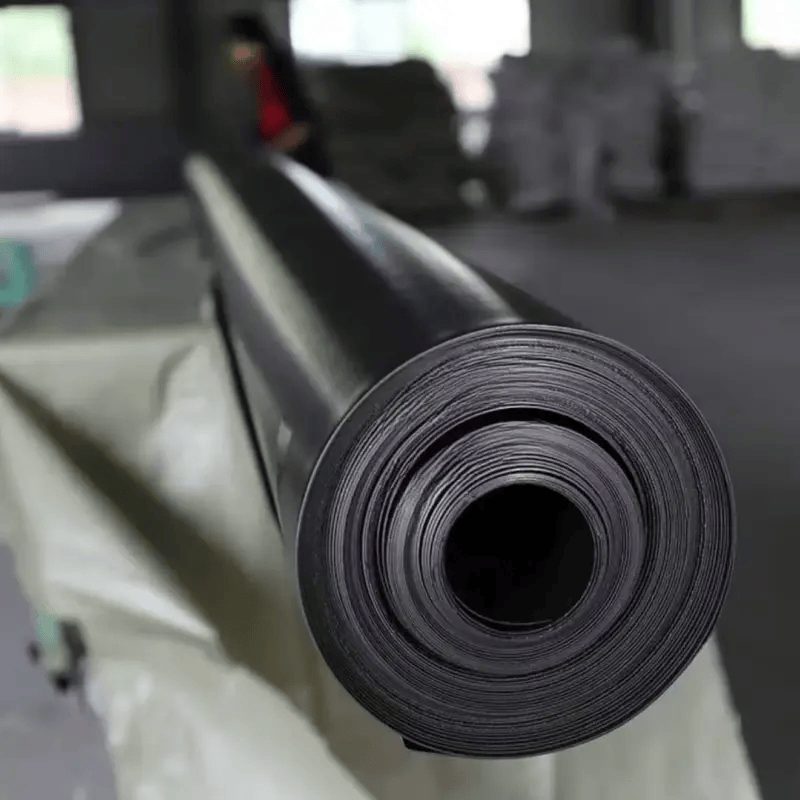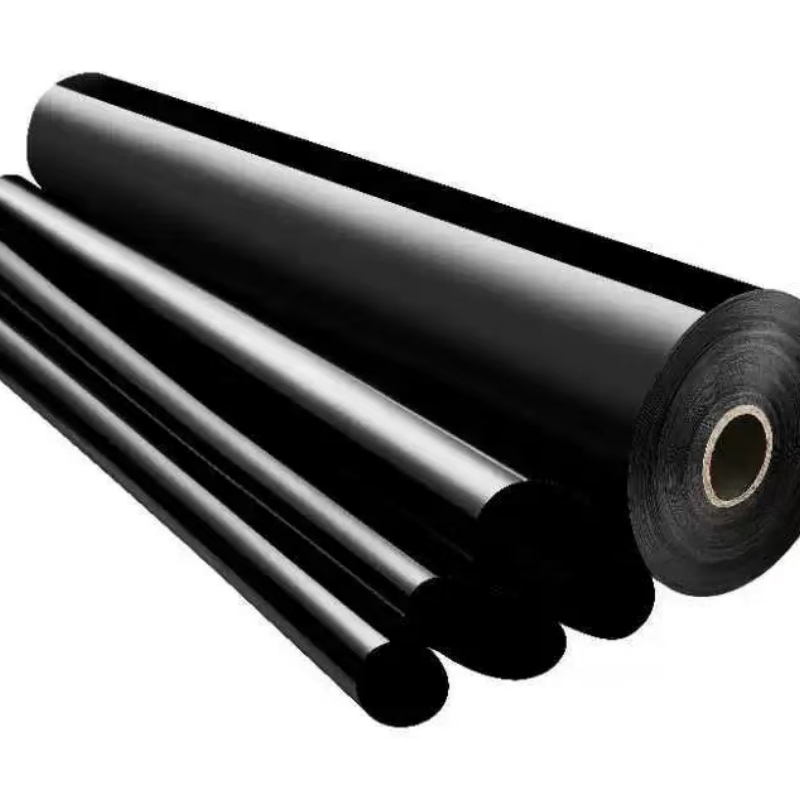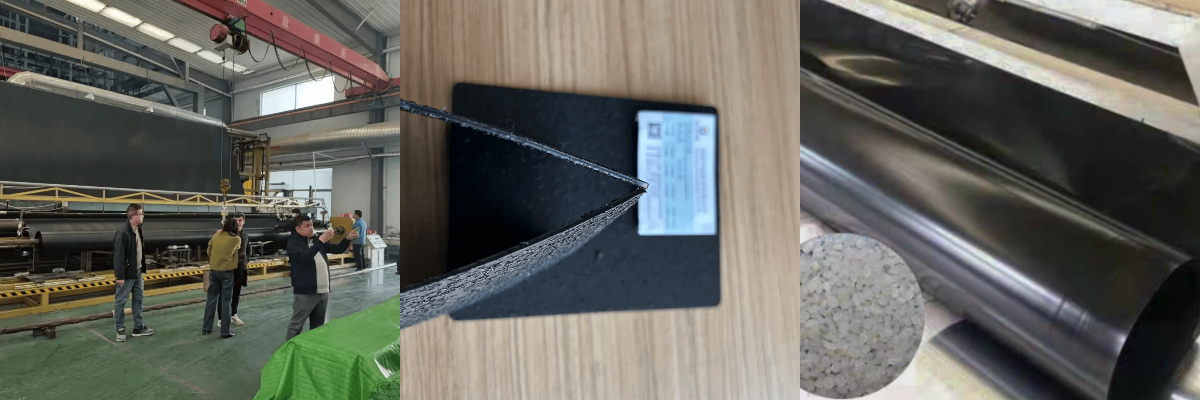What is HDPE Geomembrane? A Comprehensive Guide to Its Characteristics, Applications and Purchasing Options
1. Superb anti-seepage performance: The HDPE material has a dense molecular structure with extremely low permeability, effectively preventing liquid penetration and suitable for scenarios such as landfill sites and reservoirs.
2. Excellent durability: It possesses strong resistance to ultraviolet rays, acid and alkali, and corrosion, and can last for several decades in harsh environments.
3. Convenient and efficient construction: It is lightweight and has good flexibility, allowing for cutting, splicing, and welding according to engineering requirements, with a mature welding process.
4. Environmentally friendly, safe and reliable: Produced using environmentally friendly raw materials, it does not release harmful substances, has strong chemical stability, and will not pollute soil and water sources.
5. Lower overall cost: Although the initial investment is slightly higher, due to its strong durability, low maintenance requirements, and long service life.
1. What Exactly Is HDPE Geomembrane?
HDPE Geomembrane is a high-performance synthetic membrane made from high-density polyethylene (HDPE) resin. It is engineered to provide superior barrier properties, making it a staple in various industrial and environmental projects. Unlike traditional Geomembrane materials such as PVC or rubber, HDPE Geomembrane stands out for its exceptional strength, chemical resistance, and durability.
Manufactured through an extrusion process, HDPE Geomembrane comes in rolls of varying thicknesses, typically ranging from 0.5mm to 3mm, to suit different project requirements. Its smooth or textured surface (for enhanced friction) ensures versatility in installation, whether in flat areas or sloped terrain. This Geomembrane variant is designed to prevent the migration of liquids, gases, or contaminants, making it a reliable solution for containment and protection needs.
2. Key Characteristics of HDPE Geomembrane
HDPE Geomembrane boasts a unique set of properties that make it indispensable in critical applications. First, its impermeability is unmatched—HDPE Geomembrane has an extremely low permeability rate, effectively blocking the passage of water, chemicals, and waste fluids. This trait is vital in projects where leakage could lead to environmental damage or structural failure.
Second, durability is a hallmark of HDPE Geomembrane. It can withstand extreme temperatures, from freezing conditions to high heat, without cracking or degrading. UV resistance is another key feature; HDPE Geomembrane retains its integrity even after prolonged exposure to sunlight, unlike some Geomembrane types that become brittle over time.
Additionally, HDPE Geomembrane offers excellent chemical resistance. It remains stable when in contact with acids, alkalis, and various industrial chemicals, making it ideal for hazardous waste containment. Its high tensile strength and puncture resistance further ensure that HDPE Geomembrane can handle heavy loads and rough handling during installation and use.
3. Wide-Ranging Applications of HDPE Geomembrane
HDPE Geomembrane finds use across diverse industries due to its versatile properties. In environmental protection, it is widely used in landfill liners and caps. Landfills require a robust barrier to prevent leachate (toxic liquid from waste) from seeping into soil and groundwater, and HDPE Geomembrane delivers this reliably.
In water management, HDPE Geomembrane lines reservoirs, ponds, and irrigation canals. It prevents water loss through seepage, ensuring efficient water storage and distribution. Similarly, in mining operations, HDPE Geomembrane is used to line tailings ponds, containing mineral-rich wastewater and preventing soil contamination.
Agriculture also benefits from HDPE Geomembrane, particularly in constructing livestock waste lagoons. The Geomembrane contains manure and prevents nutrient runoff, protecting nearby water sources. Additionally, HDPE Geomembrane is used in coastal engineering, such as seawalls and erosion control, thanks to its resistance to saltwater and harsh marine conditions.
4. How to Choose the Right HDPE Geomembrane: A Buying Guide
Selecting the appropriate HDPE Geomembrane requires careful consideration of several factors. First, project requirements dictate the thickness and grade. For heavy-duty applications like landfill liners, thicker HDPE Geomembrane (1.5mm or more) is recommended, while lighter grades may suffice for non-critical uses like decorative ponds.
Next, check for certifications. Reputable HDPE Geomembrane products should meet industry standards, such as ASTM or GRI, ensuring quality and performance. Look for manufacturers that provide test reports verifying properties like tensile strength and chemical resistance.
Consider the installation environment. Textured HDPE Geomembrane is better for sloped surfaces to prevent slippage, while smooth variants work well on flat ground. Also, evaluate the compatibility of HDPE Geomembrane with other materials used in the project, such as adhesives or backfill.
Finally, compare suppliers. Choose experienced providers offering technical support, as proper installation is crucial for HDPE Geomembrane to function effectively. Avoid overly cheap options, as substandard Geomembrane can lead to costly failures.
5. Why HDPE Geomembrane Is a Superior Choice Over Other Geomembrane Types
When compared to alternatives like PVC or EPDM Geomembrane, HDPE Geomembrane offers distinct advantages. Its longer lifespan—often exceeding 50 years in optimal conditions—reduces the need for frequent replacements. HDPE Geomembrane is also more cost-effective in the long run, despite a slightly higher initial investment, due to its low maintenance requirements.
Moreover, HDPE Geomembrane is environmentally friendly, as it is recyclable and does not release harmful chemicals. Its resistance to biological growth, such as mold or algae, ensures consistent performance in damp environments. For projects prioritizing durability, reliability, and sustainability, HDPE Geomembrane emerges as the clear winner among Geomembrane options.













